“Fluoridation is the single most important commitment a community can make to the oral health of its children and to future generations.”
-C. Everett Koop
Most weekends, I take on a lighter topic, as a way of taking a break from the deep physics, astronomy, and science we share during the week. But every once in a while, there’s an important story that needs to be told. This weekend, I invite you to enjoy Tony Rice’s rendition of a fabulous Gordon Lightfoot story song, Wreck of the Edmund Fitzgerald.
One of the most contentious issues going on in my city — Portland, OR — right now, is our upcoming vote this May on whether or not we should fluoridate our drinking water. Now, a little disclosure from me, first:
- I am an astrophysicist, not a medical doctor, not a dentist, and not a professional in the medical sciences.
- I’ve lived in eight different states during my life; I moved to Oregon in 2008, which is the only place I’ve lived that doesn’t fluoridate our drinking water.
- My values on public health are that we, as a community, should maximize the good health of our citizens while minimizing any bad effects that may arise.
- In other words, if fluoridating our drinking water will result in better overall health for our citizenry than not fluoridating, I’ll be in favor of it. And if not — if the risks/bad effects outweigh any benefits — I’ll be against it.
That said, I’m not an expert on this issue. But the experts aren’t deciding our public policy on this issue: we, the voters, are. So I’ve set out to try and separate the science facts from scams, polemics and fictions concerning fluoridated drinking water. What follows is the best I’ve been able — as a non-expert on short notice — to put together.
 Image credit: Michael Dayah, of http://ptable.com/.
Image credit: Michael Dayah, of http://ptable.com/.First off, some basic science. Fluoride is a chemical — an ion — that’s added to drinking water. Now, I don’t know what you think of when you hear the word chemical; a lot of people think of toxins, plenty also think of poisons. It’s true that chemicals can be toxic or poisonous, but when I think of chemicals, I immediately think of chemistry.
And the chemistry of fluoride — that’s an ion containing fluorine, the ninth element in the periodic table — is really interesting. For one, fluorine is the most electronegative element, and is excellent at helping the transport of many positive ions, including calcium. We all have a non-negligible amount of fluorine (the element) in our bodies, as well. If you were to separate our bodies into the individual atoms composing it, you’d find that about 0.004% of your body, by weight, was made up of fluorine.
Now, the first place I went was to my dentist, who told me the following:
- The most effective use of fluoride is topically, along the teeth, and is a tremendous benefit for dental health.
- When she says “dental health,” she means strengthening teeth and reducing caries/cavities.
- Naturally, water has a huge variety of fluoride concentrations, from less than 0.1 ppm (milligrams-per-liter) to in excess of 8 ppm; ours has a little bit naturally (about 0.2-0.3 ppm), but this is less than half the minimum recommendation from the US Public Health Service.
- In Portland, because we don’t have fluoridated water, I am at a significantly higher risk for developing cavities. So in addition to brushing and flossing, I should be doing a fluoride rinse (like ACT) twice a day, and should not eat or drink anything (even water) for half an hour after rinsing.
- She wishes that we would fluoridate our drinking water, as even though toothpastes, modern dental hygiene and a fluoride rinse are great for dental health, fluoridating our drinking water at the recommended levels would help our city’s overall dental health tremendously.
And the next place I went was to the American Dental Association’s website, where I found out:
- Water fluoridation continues to be effective in reducing tooth decay by 20 – 40%, even in an era with widespread availability of fluoride from other sources, such as fluoride toothpaste.
- Fluoridation is one public health program that actually saves money. An individual can have a lifetime of fluoridated water for less than the cost of one dental filling. And,
- Community water fluoridation is the single most effective public health measure to prevent tooth decay.
Which sounds pretty good! It makes sense, after all: if fluoride is good at transporting calcium, it can help strengthen your teeth. In fact, it’s very important, developmentally, for infants to get the right amount of fluoride during the first few years of their life, as too little fluoride can result in weak bones and weak teeth.
But, as I started hearing from a lot of people, there may be drawbacks. One of them — most prominently — was dental fluorosis.
Someone alerted me that 40% of people have this! Well, no one wants discolored teeth, especially not the severe, brown stains that you can see in the last panel.
So I went and looked it up, and guess what? 40% of people do have some form of dental fluorosis, but…
Only 0.1% have what would be considered severe dental fluorosis. The teeth in this case are not just discolored, but also weaker than healthy teeth. So I looked up what causes those brown teeth. Do you know where we first discovered it?
In Colorado Springs, Colorado! It turns out that the water there, naturally, has excessively high amounts of fluoride in it! And giving someone too much fluoride can result in this severe form of fluorosis. In other words, too much fluoride is bad for you. It’s bad for your teeth and it’s bad for your bones. In the 1940s, in Grand Rapids, Michigan, they discovered that fluoridating drinking water at certain levels actually strengthened tooth enamel, reduced cavities, and improved lifelong dental health, both in children and in adults. Today, fluoridating drinking water means regulating the amount of fluoride to be between about 0.7 and 1.2 ppm.
We don’t normally think about our teeth when we think about health, but poor oral health is linked to tooth pain (obviously), which in turn is linked to:
- difficulty sleeping,
- difficulty concentrating in school and at work,
- decreased achievement of children in school,
- and possibly linked to heart disease.
So fluoridating our drinking water at the recommended levels would definitely improve our dental health; the science is very clear on that. But are there other side effects? Someone pointed out the following to me.
Reduced IQ?! Because of fluoride?! So I went and looked into it.
So this is based on a few studies, like this big one in rural China, and this one from Iran. It’s true, again, sort of. Yes, high levels of fluoride are correlated with lowered IQ, by up to 10 points. But this effect — the lowered IQ — is only seen in places where fluoride concentrations are at least 250% what the maximum recommended US value is. In fact, there are places in the study where levels are eight times that value! So yes, fluoridated water is linked to lower IQ, but not at the levels we fluoridate our water at.
People also pointed out a link to be between fluoridated drinking water and bone fractures.
Again, there is a link between fluoride and fractures, but it isn’t nearly as scary as you might think.
What the research shows here is that, if your fluoride concentration rises above 2.5 ppm (and remember, fluoridated water in the U.S. is between 0.7 and 1.2 ppm), your risk of bone fractures begins increasing spectacularly; this is due to a condition known as skeletal fluorosis. What’s interesting, though, is that if your fluoride concentration is too low, as in, below 0.5 ppm, your risks of fractures also increases! The place where fractures are minimized? Between 0.6 and 1.2 ppm.
This is true for all types of fractures except hip fractures, which don’t increase at low fluoride levels but do increase in rate above 1.2 ppm.
I also looked a little farther into the causes of fluorosis.
It turns out that fluoridated drinking water, on its own, at the recommended levels, will not cause moderate or severe fluorosis. But there are four things that people really, really should be aware of, because these can cause fluorosis in children:
- Swallowing fluoride toothpaste. Children under the age of two should not use toothpaste, and you should supervise your children each time they brush their teeth with toothpaste until they’ve established that they never swallow toothpaste. It’s great for topical applications, but getting too much fluoride, especially all-at-once, can cause fluorosis in their permanent teeth.
- Fluoride-containing infant formula. Breastfeeding a young child is ideal for a number of reasons, but not everyone does it for a variety of reasons. If, for some reason, you use infant formula instead of breastfeeding, be aware that many infant formulas contain moderate-to-high levels of fluoride, and, if so, should only be reconstituted with distilled water, not with fluoridated tap water.
- Tea! Believe it or not, many types of tea leaves contain large amounts of fluoride, and there’s even a woman (linked here) who gave herself skeletal fluorosis as an adult by drinking 1-2 gallons of tea every day for decades, upping her average dose to over 5 ppm of fluoride.
- Fluoride-containing drops. Many doctors will prescribe fluoride drops for babies who live in areas with very low levels of fluoride. (Some doctors do it here.) Do not use these drops on your child unless your doctor prescribes them to you! I know someone with moderate dental fluorosis because her mother gave her these drops despite having fluoridated drinking water; listen to your doctor!
There are a whole host of fluoride studies out there that were pointed out to me, and there are a few things that I do have mild reservations about.
There are presently three different fluoridating agents used in the USA; it’s possible that sodium fluoride — which is about five times as expensive as hydrofluorosilicic acid — poses slightly fewer long-term health risks, such as arsenic poisoning. If we were willing to spend five times as much to fluoridate with NaF instead of H2SiF6, that might be a better option. I’m hopeful that, down the road, when the science comes in conclusively on this issue, we’ll make the decision that’s in the best interest of public health.
There’s also evidence that fluoride causes calcium deposits in the brain’s pineal gland. It is unclear what, if any, negative health effects come along with that. But again, it’s worth investigating.
As far as I’ve been able to tell, according to all the original sources I’ve been able to dig up, water fluoridation is a relatively cheap, very effective and remarkably safe way to improve the dental health of the public. This systematic review, of 77 different studies (from 2008) agrees, and says the following.
It’s also worth noting that the Tampa Bay Times’ editorial writing staff just won a pulitzer prize for editorial writing for debunking five myths associated with the anti-fluoride movement.
In summary, here’s what I’ve learned about fluoride: fluoridating our drinking water at the optimum level recommended by the US Public Health Service — around 1 ppm — strengthens teeth, reduces cavities/caries, and provides protection against many poor health outcomes associated with both too much and too little fluoride.
This was the subject of a heated discussion on scienceblogs a few years back, with an anti-fluoride post by Coby and a scientific takedown of that post by Orac. Indeed many legitimate doctors have spoken out against the anti-fluoridation movement.
It’s important to recognize that just because something is natural doesn’t mean it’s good for you, and just because something’s artificial doesn’t mean it’s bad for you. It’s also important to realize that public health means doing what’s best both for most of us and for the least affluent among us. What should guide us in making decisions about public health? The science. In this case, the science says that fluoridation is safe, the side effects are pretty much solely cosmetic and minor, and the health benefits to society are tremendous. And that’s why I’m pro-fluoridation at this point in time. (It’s telling that the anti-fluoridation group in Portland advances these as their best arguments.) It’s possible that there are health problems associated with fluoridated drinking water that we haven’t yet discovered. If we discover them, and those problems outweigh the health benefits associated with the improved dental health, I would change my mind, and advocate that fluoride be removed from the water.
It’s very rare that we get an opportunity to actually make a large impact in our public health system. We might not have universal healthcare, we might not even have a society where everyone can afford to go to the dentist. But — for less than the cost of one bottle of fluoride mouthwash per year — we can fluoridate our drinking water at the levels that science shows to be optimal for dental health. This May 21st, for everyone in Multnomah County, the evidence has convinced me: vote yes for public health; vote yes to fluoridation!

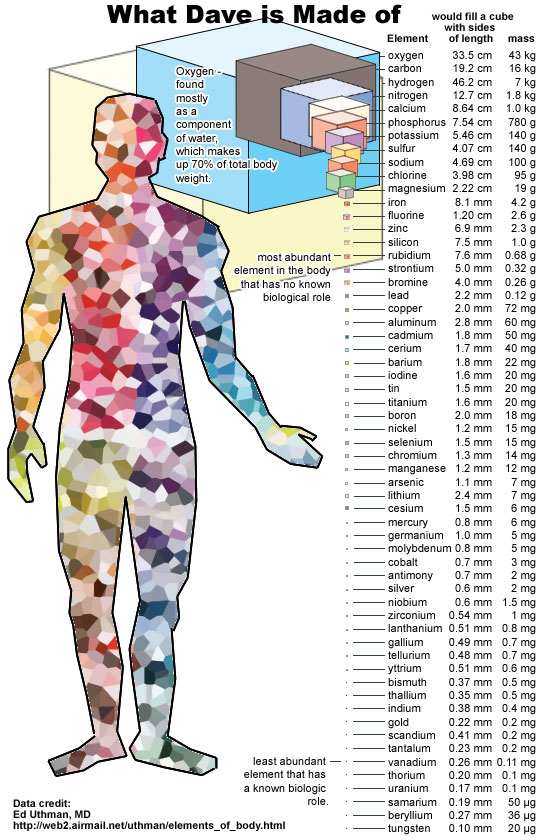
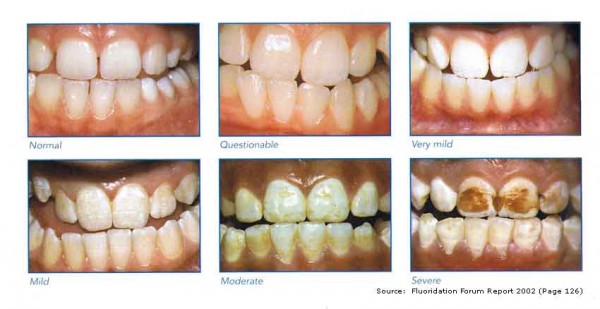

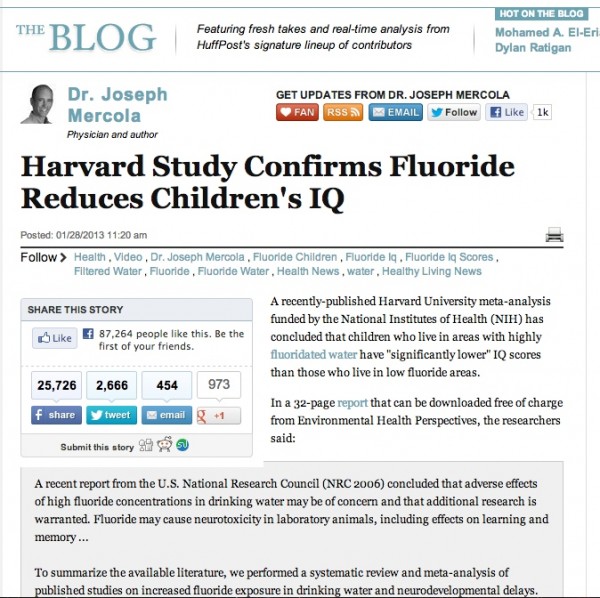
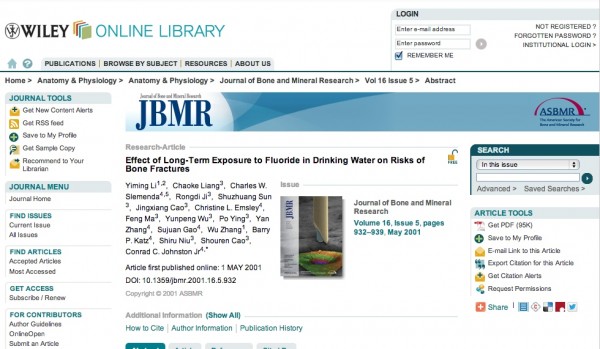
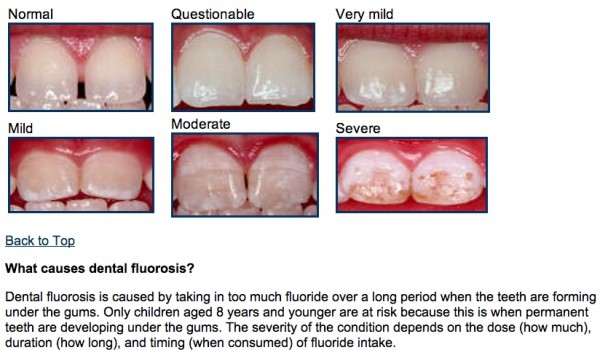
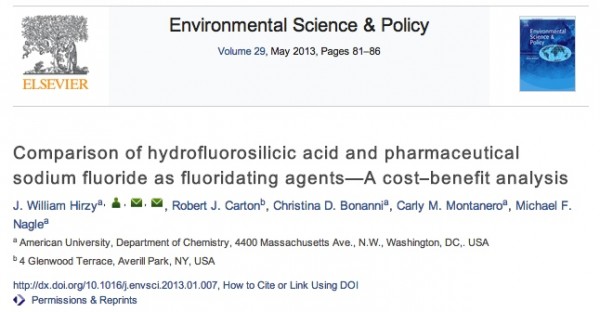
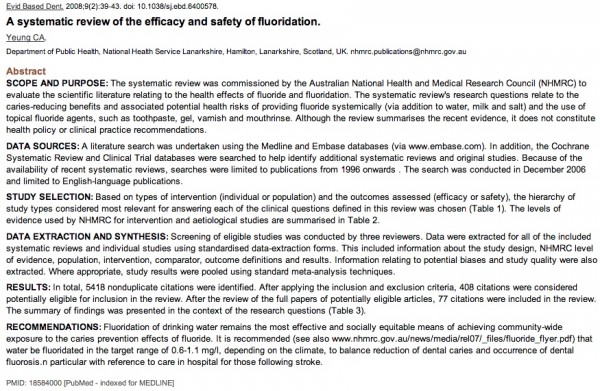
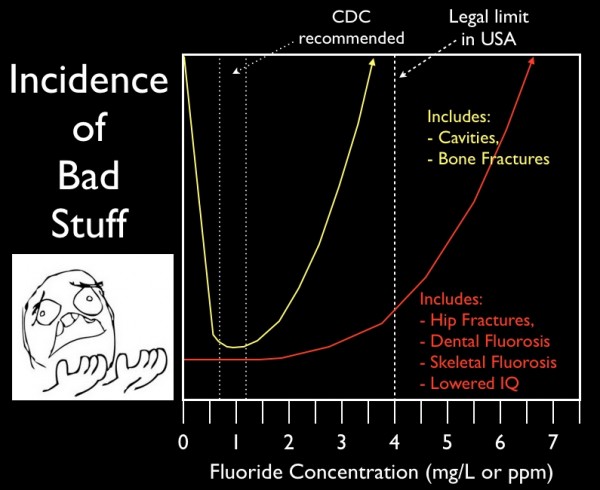
*Original article, with comments, is online at https://scienceblogs.com/startswithabang/2013/04/21/weekend-diversion-fluoridated-water-science-scams-and-society
Articles on fluoridation by Ethan Siegel:
• Dec 9, 2020, 7 Anti-Science Myths We All Need To Unlearn, Forbes
• July 10, 2020: You Must Not ‘Do Your Own Research’ When It Comes To Science, Forbes
• Dec 8, 2016: What to watch for when science becomes politicized, Forbes
• April 21, 2013: Weekend Diversion: Fluoridated Water: Science, Scams and Society, ScienceBlogs